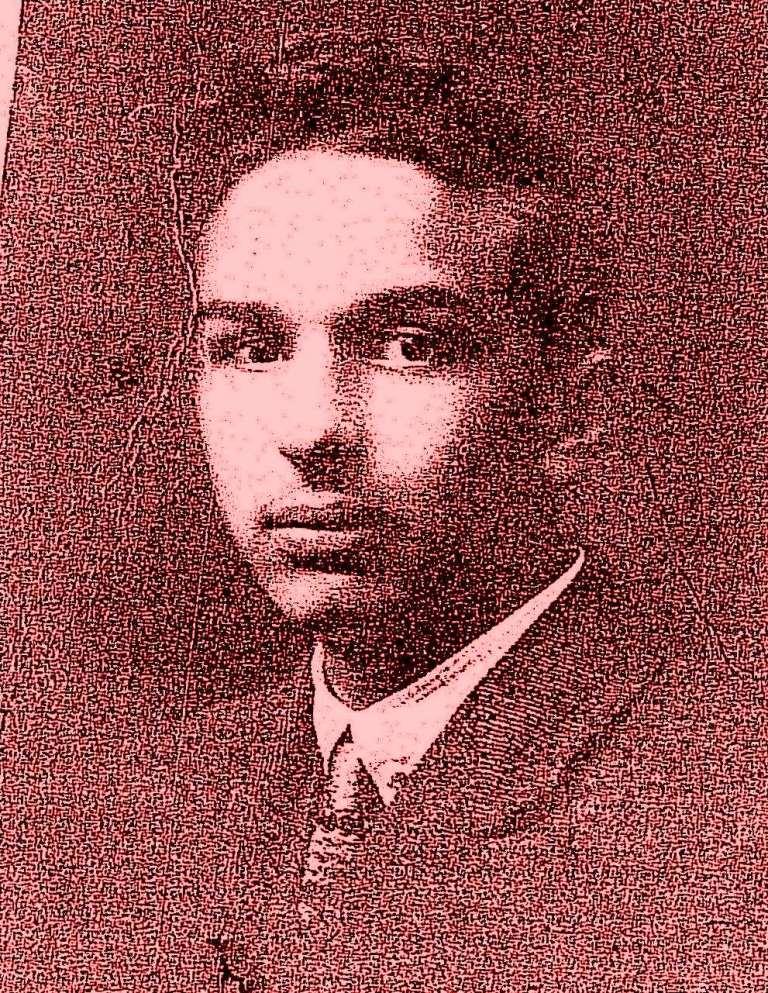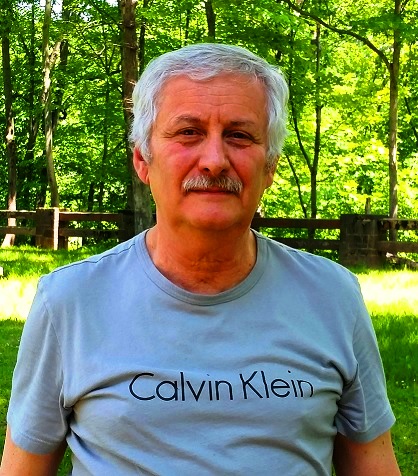|
Lindenbaum Method Alex Citkin Metropolitan Telecommunications, USA Alexei Muravitsky. Louisiana Scholars’ College Northwestern State University, USA During his brief life, the Polish mathematician and logician Adolf Lindenbaum
(1904–1941) contributed to mathematical logic, among other
things, by several significant achievements. Some results of Lindenbaum’s,
which bear his name, were published without proofs by other
people from the Lvov–Warsaw School and the proofs later were provided
by some others, though the authorship of Lindenbaum has never
been challenged. Many may have heard about Lindenbaum’s lemma,
asserting the existence of Lindenbaum’s extension, and LindenbaumTarski
algebra; less known is Lindenbaum’s logical matrix. This tutorial
is devoted to the two last concepts rather than the first one. However,
the latter can be understood in a purely algebraic fashion, if one employs
the notion of Lindenbaum-Tarski algebra. In general, the notions
of Lindenbaum matrix and Lindenbaum-Tarski algebra have paved a
way to further algebraization of logic, which had been begun by George
Boole in the 19th century, as well as to a new branch of logic, model
theory. For this reason, the present tutorial is also a gentle introduction
to algebraic logic.
A uniting idea of the aforementioned concepts is a special view on the formal judgments of a formal language. It is this view we call the Lindenbaum method. Although Lindenbaum expressed merely a starting viewpoint in the tradition of Polish logic of the time, this viewpoint became a standard ever since and its development goes on until this day, continuing to shape the field of algebraic logic. Our main objective is to demonstrate how this view gave rise to formulating the aforementioned concepts and how it opens door to unexplored paths. I. Lindenbaum’s logical matrix /The idea to interpret symbolic judgments in mathematical structures goes back to George Boole. It was Lindenbaum who took for an interpretation of judgments the judgments themselves. But prior to this, he started treating the entire class of judgments as an abstract algebra, nowadays known as a formula algebra. Some experts call this Lindenbaum’s move a milestone in the history of algebraic logic and universal algebra. The turning point distinguishing the Boole-DeMorgan-Schr¨oder tradition in algebraic logic from modern tradition is the algebraization of formal deduction. The first step in this direction is the introduction of the notion of deductive system and that of consequence relation. There are a few standard ways to define a deductive system; in this part, we focus on two of them — rules of inference and logical matrix. On the one hand, the Lindenbaum logical matrix is just a special case, on the other, it characterizes all formal theorems (or theses) of any deductive system (Lindenbaum theorem) II. Characterization of deductive systems
Powerful enough to characterize any class of theses, the notion of Lindenbaum matrix does not suffice to determine any deductive system. This part will address the question of characterization of deductive systems. Two W´ojcicki’s theorems will be discussed. The first deals with the notion of a bundle of logical matrix ; in terms of the latter any deductive system can be determined. The second theorem finds conditions under which a deductive system can be characterized by a single logical matrix. The theorems of Lindenbaum’s and W´ojcicki’s were merely first steps towards algebraization of deduction based on sentential formal language. Next came analysis of matrices and algebras which “separate” premises from not derived from them sentences in deductive systems, thereby introducing the conception of separating means. This in turn has led to the notion of Lindenbaum-Tarski algebra. The latter often is obtained by a transformation of a Lindenbaum matrix with the use of a special congruence. In unital deductive systems the LindenbaumTarski algebra of such a system is adequate for the set of its theses. 
Adolf Lindenbaum, September, 1922 Adolf Lindenbaum: Notes on his Life, with Bibliography and Selected References |

III. Effectiveness issues
The idea of effectiveness (in a broad sense of the word) and its importance had gradually established itself by the middle of the 20th century, when the notion of cardinal number and that of effective method, that is computability, were fully realized. The problems like the followingwere raised and solved: whether a deductive system formulated in a countable language can always have a finite logical matrix adequate for its theorems (J.C.C. McKinsey and A. Tarski); whether it is effectively decidable that any two finite logical matrices or any two finite bundles have the same set of theorems (J. Kalicki for matrices, A. Citkin for bundles); whether any deductive system formulated in a countable formal language can be determined by a single denumerable matrix (A. Wro´nski). Some of these problems and related to them, as well as the finite model property of a system, will be discussed in this part Bibliography
∙ A. Citkin, On an effective problem concerning mutual adequacy of two finite truth-tables, (in Russian) Proceedings of the Fourth Conference on the Occasion of the 30th Anniversary of the Liberation of Carpathians, Uˇzgorod, USSR, 1975. ∙ A. Citkin and A. Muravitsky, Lindenbaum method (propositional language), http://arXiv:1609.07379 [math.LO] ∙ J. Czelakowski, Model-Theoretic Methods in Methodology of Propositional Calculi, The Polish Academy of Sciences, Institute of Philosophy and Sociology, Warsaw, 1980. ∙ J.–M. Font, Abstract Algebraic Logic, College Publications, London, 2016, Studies in Logic, Vol. 60. ∙ J. Kalicki, A test for the equality of truth-tables, J. Symbolic Logic, 17 (1952), 161–163. ∙ J. Lo´s and R. Suszko, Remarks on sentential logics, Nederl. Akad. Wetensch. Proc. Ser. A 61 = Indag. Math., 20 (1958), 177–183. ∙ J.C.C. McKinsey and A. Tarski, Some theorems about the sentential calculi of Lewis and Heyting, J. Symbolic Logic, 13 (1948), 1–15. ∙ A. Muravitsky, Beyond Rasiowan systems: unital deductive systems, Logica Universalis, 8 (2014), 83–102. ∙ W. Pogorzelski and P. Wojtylak, Completeness Theory for Propositional Logics, Birkh¨aser, 2000. ∙ H. Rasiowa, An Algebraic Approach to Non-Classical Logics, North-Holland Publishing Co., Amsterdam, 1974, Studies in Logic and the Foundations of Mathematics, Vol. 78. ∙ A. Tarski, Logic, Semantics, Metamathematics. Papers from 1923 to 1938, Oxford at the Clarendon Press, 1956, Translated by J. H. Woodger. ∙ R. W´ojcicki, Theory of Logical Calculi, Synthese Library, vol. 199, Kluwer Academic Publishers Group, Dordrecht, 1988 ∙ A. Wro´nski, On cardinalities of matrices strongly adequate for the intuitionistic propositional logic, Reports on Math. Logic, no. 3, 1974, 67–72. Useful LinksEncyclopedia of MathematicsInternet Encyclopedia of PhilosophyStanford Encyclopedia of PhilosophyBack to the 6th Universal Logic School ! | ||||